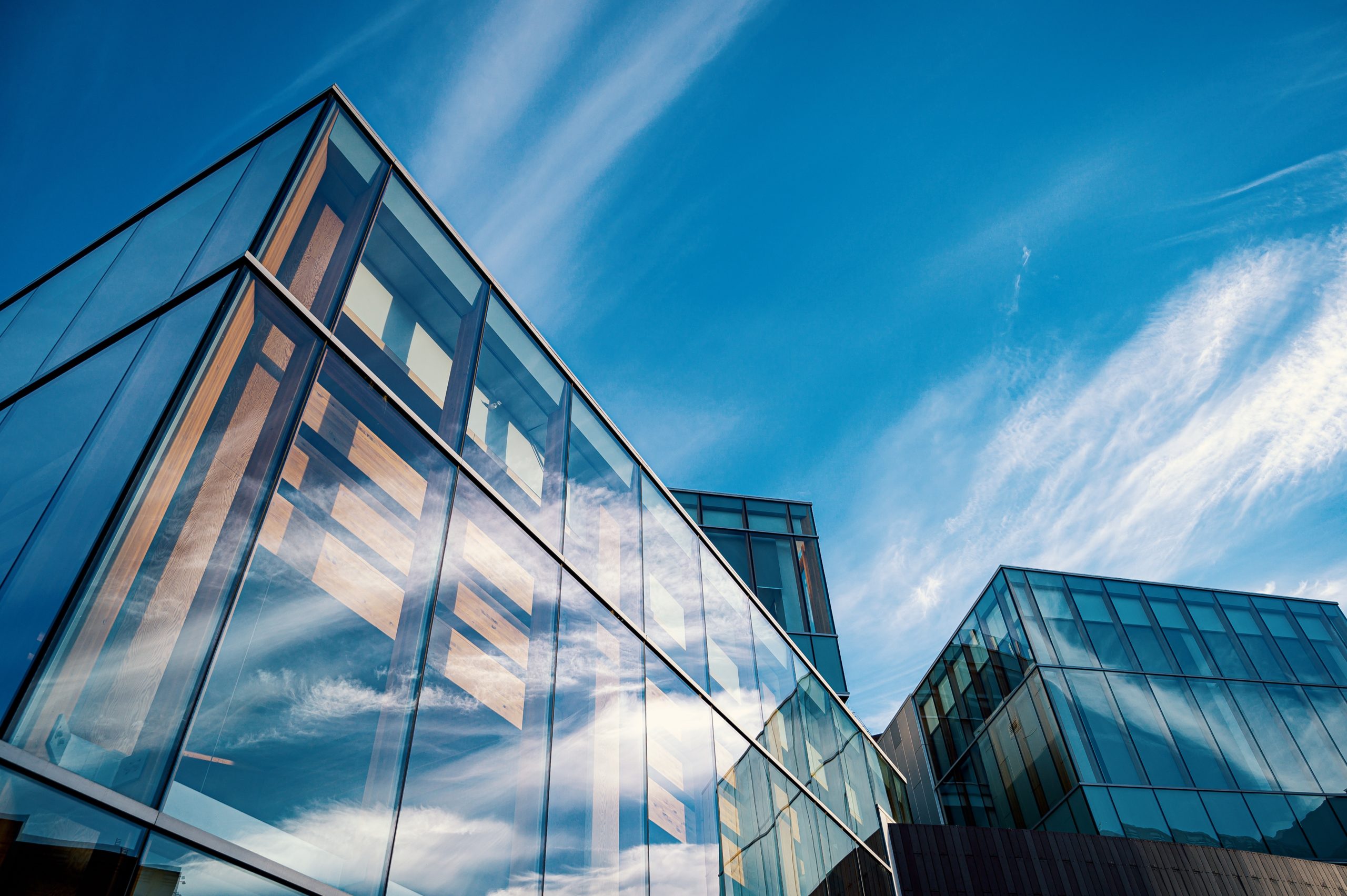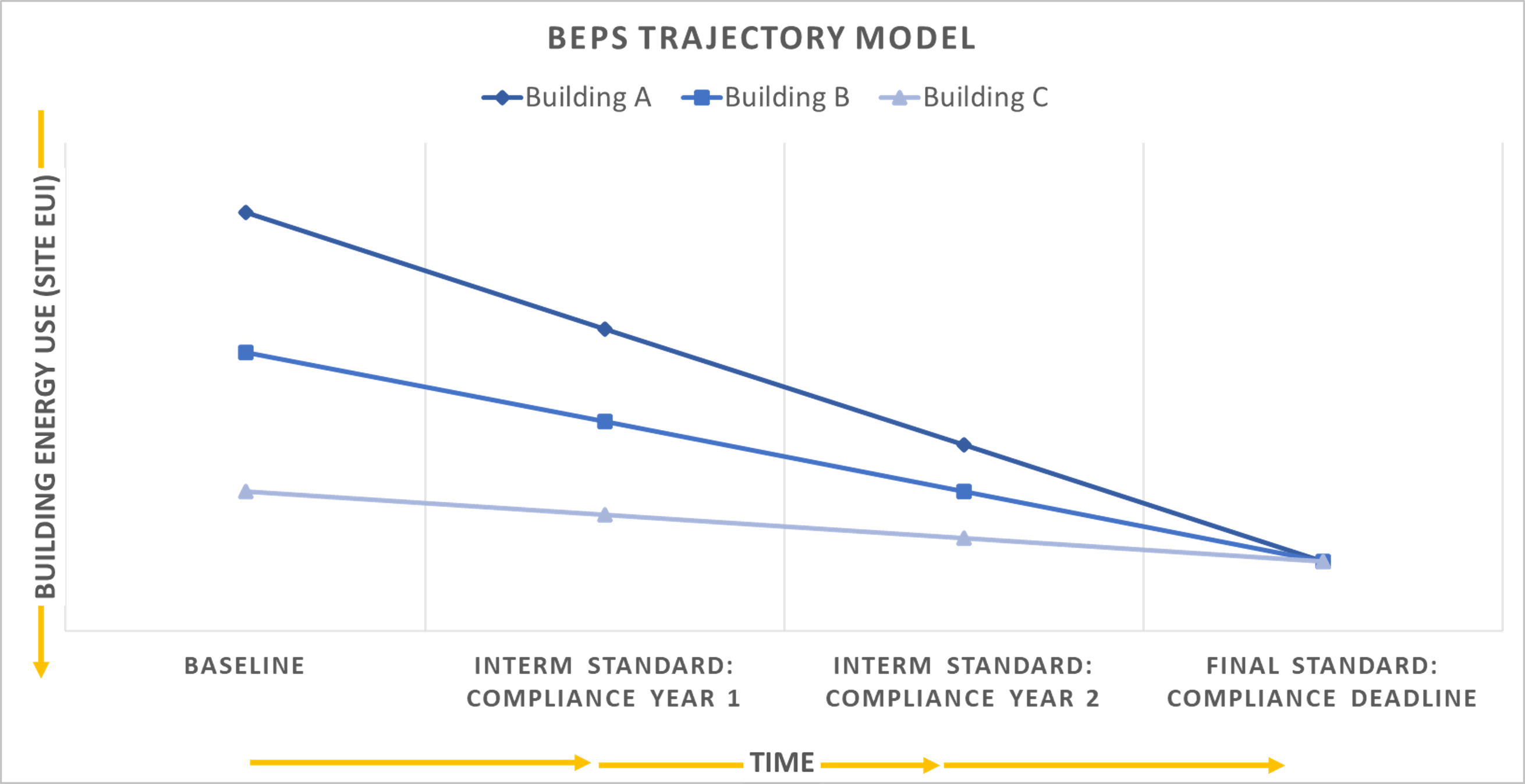

Blog
Montgomery County, MD, passed Bill 16-21, which creates a Building Energy Performance Standard (BEPS) for buildings within the county. What happens next?

Montgomery County, MD, passed Bill 16-21, which creates a Building Energy Performance Standard (BEPS) for buildings within the county. The law also expands benchmarking requirements within the county, requiring private and Montgomery County-owned buildings over 25,000 square feet to benchmark energy use no later than June 1, 2024, in advance of demonstrating energy performance in the future.
Montgomery County’s BEPS phases in across different groups of buildings between 2024 and 2027. Each group will have 10 years to meet the BEPS for their particular building type.
Most importantly, each building will need to demonstrate that it meets the BEPS. All but the highest-performing buildings over 25,000 square feet may need to take some action.
Montgomery County uses a phased approach for their BEPS intended to encourage all buildings to meet a long-term energy use target. Buildings start at a baseline of their own historical use and have a 10-year goal of meeting the standard. An interim target halfway between the baseline and the final standard is used for the first 5 years for each building typology, as shown in the graph below. Buildings are grouped by size and main function (see here under the “Covered Buildings” section).

The final standard and interim target for each typology are yet to be defined.
The BEPS Technical Report (PDF), authored by Steven Winter Associates through a grant from the National Resource Defense Council (NRDC) and funding from the Department of Environmental Protection (DEP), will be used to inform rulemaking.
The report is designed to help identify Montgomery County building stock that would be subject to the BEPS and includes information on potential long-term targets for each major building typology. It also contains case studies that help demonstrate the technical feasibility of meeting these identified targets.
This report includes the following findings:
At SWA, we’re working with our clients to evaluate how to be proactive about the Montgomery County BEPS. Here are the first steps we recommend:
Bill 16-21 also expands the benchmarking requirements within Montgomery County. Data accuracy is a critical first step in the compliance process.
Check that square footages, space use types, occupancy, and all meters are entered. A good place to start is ENERGY STAR® Portfolio Manager®’s Data Quality Checker. If updates need to be made to your Portfolio Manager entry, SWA can work with you to ensure you have the documentation you need.
Interim targets require proactive thinking to understand how they pair with the final target. Have a plan to address both targets separately or concurrently, depending on what is practical for your building, capital needs, and financing.
Each building has approximately 10 years to take action to meet the BEPS, so there is not much time to correct performance. Plan for major upgrades to allow for your building to meet the BEPS; otherwise additional upgrades may need to occur before the end of new equipment’s lifespan.
SWA can work with your team on a BEPS pathway analysis to help determine a plan of action. Some buildings may be able to comply with operations improvements and retro-commissioning of systems. Others should expect major equipment replacements or upgrades.
Click here to contact us and speak with one of our energy efficiency experts.
Contributor: Chris Pendley, Senior Building Systems Engineer at SWA
Steven Winter Associates